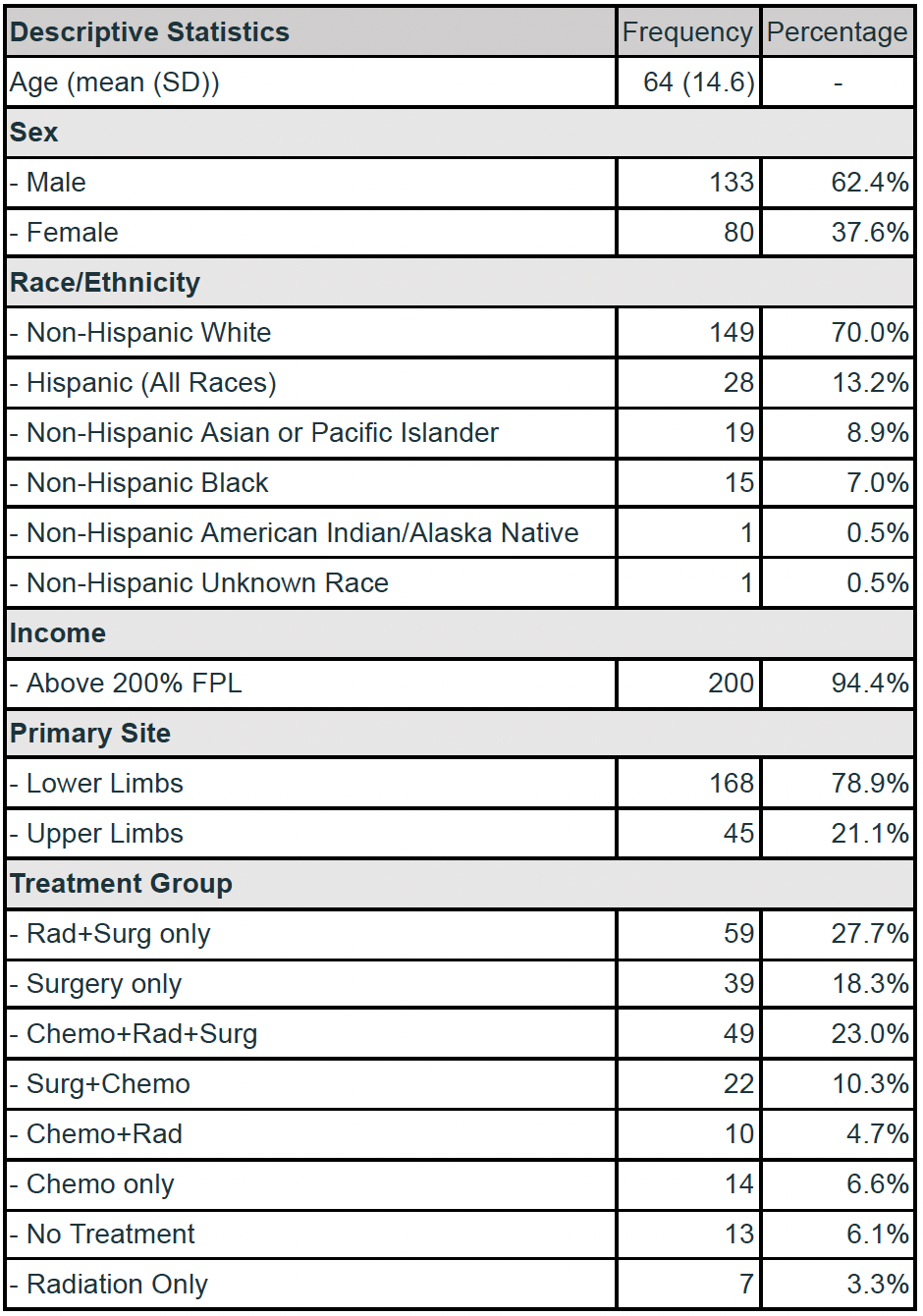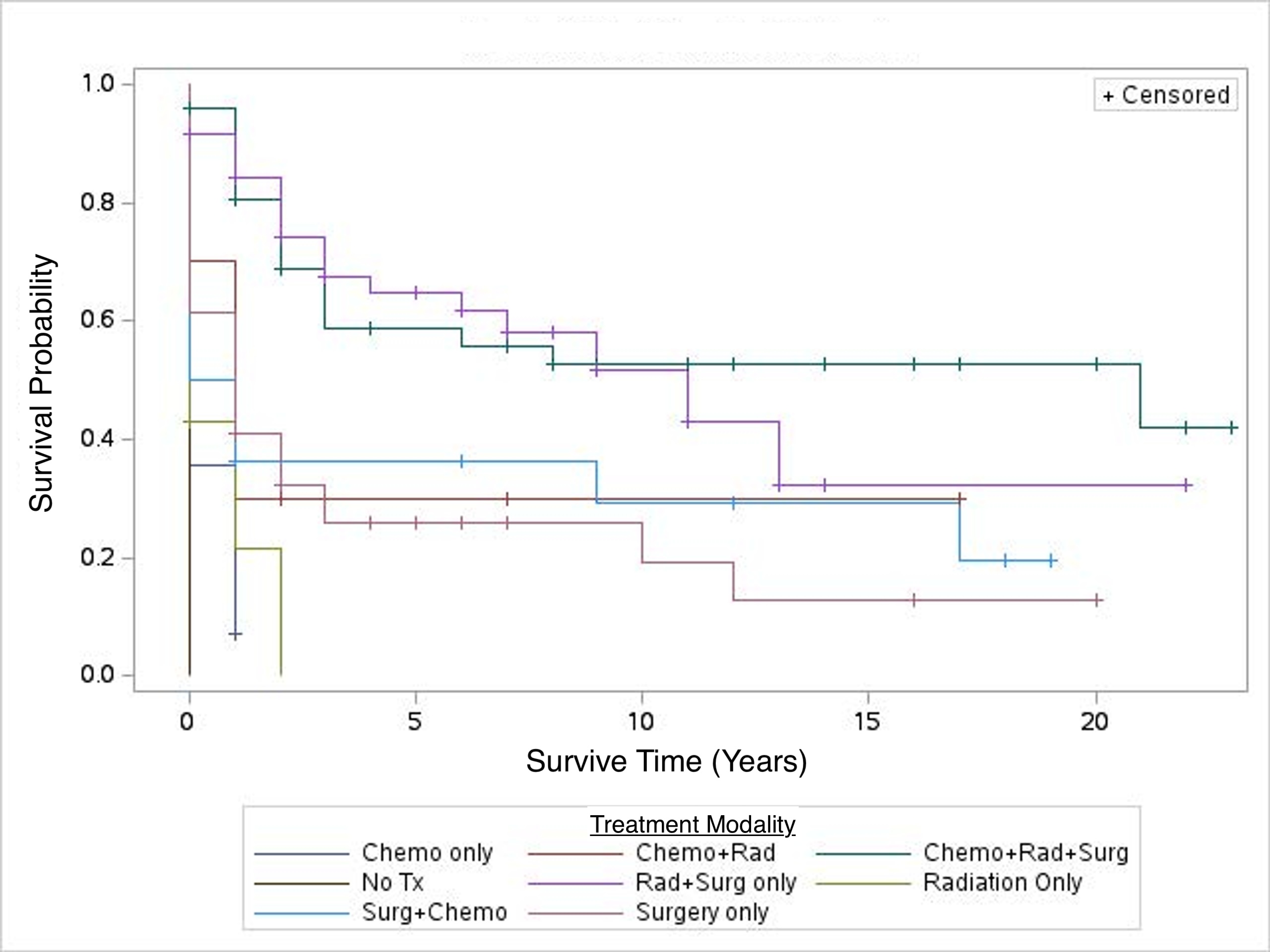Background: Rhabdomyosarcoma (RMS) is an exceptionally rare soft tissue sarcoma that exhibits significantly lower survival rates in adults when compared to pediatric patients. This disparity is likely attributed to a combination of histopathological variations, delayed, or missed diagnoses, and treatment-related factors(1). Notably, adult RMS originating from the extremities is classified as “unfavorable” and has been associated with poor survival rates, yet there is a scarcity of studies comparing survival by treatment modality or evaluating prognostic factors(2). Therefore, this study aimed to identify the demographic, socioeconomic factors, and treatment modalities significantly affecting the prognosis of adult RMS of the extremities.
Methods: To understand prognostic factors, an analysis of all cases of adult RMS of the upper and lower extremities reported in the Surveillance, Epidemiology, and End Results (SEER) database 17 registry incidence data from 2000-2020 was conducted. Survival trends based on treatment group, race/ethnicity, sex, household income, and age were analyzed using Kaplan Meier (KM) curves and further assessed via multivariable Cox proportional-hazards (CPH) model.
Results: A query of the SEER database for patients over 18 years of age with RMS originating from the upper and lower limbs returned a total of 213 cases. The average age was 64 years (Std Dev=14.6), with the majority being male (62%), non-Hispanic white (70%), and income above 200% of the federal poverty level (FPL) (94%). Most patients had RMS primary to the lower limb (79%) and received either combinations of chemotherapy, radiation, and surgery (chemo+rad+surg) (23%), radiation and surgery (rad+surg) (27.7%), or surgery only (surg) (18%). KM curves revealed a significant overall survival difference among treatment groups but no significant overall survival difference between race/ethnicity, sex, and income. In the CPH model, when compared to no treatment, chemo+rad+surg HR=0.15 (95% CI: 0.07-0.35), rad+surg HR=0.13 (95% CI: 0.06-0.28), chemo+surg HR=0.42 (95% CI: 0.18-0.95) and rad+surg HR= 0.35 (95% CI: 0.17-0.71) were protective against mortality when adjusted for all other variables in the model. In addition, for every 1-year increase in age there was an increased risk of mortality HR=1.02 (95%CI: 1.00-1.03).
Conclusions: Our findings indicate that age, treatment modality, and multimodal treatments (varying combinations of chemotherapy, radiation, and surgery) significantly impact overall survival and mortality. In contrast, sex, race/ethnicity, and household income did not demonstrate significant impact on overall survival. These results underscore the importance of early diagnosis and treatment strategies on improving the prognosis of adult RMS of the extremities. Further research is warranted to better understand the underlying biological differences between adult and pediatric RMS and to optimize treatment approaches for this rare and aggressive malignancy.


